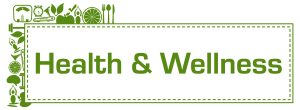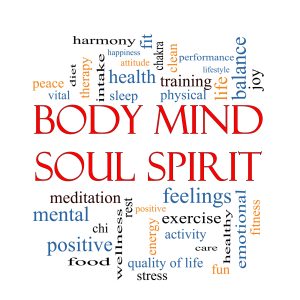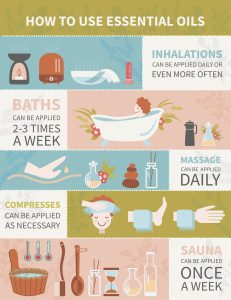By – James M. Katz, BA
 Holistic wellness has emerged as a transformative approach to health and well-being, focusing on the interconnectedness of mind, body, and spirit. This comprehensive perspective goes beyond traditional medicine, embracing a wide range of practices and therapies to promote overall wellness. By considering the whole person rather than isolated symptoms, holistic wellness offers a path to achieve balance and optimal health in all aspects of life. Holistic wellness is all about looking at health from a big picture perspective. Instead of just focusing on one part of the body, it considers the whole person, including their mind, body, emotions, and spirit. This approach aims to achieve balance and harmony in all aspects of life, leading to overall well-being.
Holistic wellness has emerged as a transformative approach to health and well-being, focusing on the interconnectedness of mind, body, and spirit. This comprehensive perspective goes beyond traditional medicine, embracing a wide range of practices and therapies to promote overall wellness. By considering the whole person rather than isolated symptoms, holistic wellness offers a path to achieve balance and optimal health in all aspects of life. Holistic wellness is all about looking at health from a big picture perspective. Instead of just focusing on one part of the body, it considers the whole person, including their mind, body, emotions, and spirit. This approach aims to achieve balance and harmony in all aspects of life, leading to overall well-being.
This article explores the key components of holistic wellness and their integration into daily life. It delves into the mind-body connection, discussing strategies to nurture mental health and cultivate physical well-being. The piece also examines the role of spiritual growth in holistic care and presents various holistic wellness practices. Additionally, it provides guidance on incorporating these principles into everyday routines, offering readers a roadmap to enhance their overall health and quality of life through a holistic approach.
Key Takeaways
Holistic wellness involves caring for the mind, body, emotions, and spirit together.
Mental and emotional health are just as important as physical health in holistic wellness.
Good nutrition, regular exercise, and proper sleep are essential for physical wellness.
Building strong social connections and finding balance in work and life contribute to social and occupational wellness.
Spiritual and financial health also play a significant role in overall well-being.
Understanding Holistic Wellness
Definition
Holistic wellness is an approach to health that considers the whole person, addressing physical, mental, emotional, social, and spiritual components of well-being. It’s rooted in the understanding that all these aspects are interconnected and influence overall health. This comprehensive perspective goes beyond treating isolated symptoms, instead focusing on caring for the entire individual.
Core Principles
The core principles of holistic wellness emphasize the integration of various aspects of health:
1. Treating the Whole Person: Holistic practitioners view illness as a manifestation of dysfunction in the whole person, not just an isolated event. They consider how bodies, minds, spirits, relationships, and environments coalesce to shape health outcomes.
2. Prevention Over Treatment: Holistic approaches prioritize preventing illness before it occurs, which is often more cost-effective than treating symptoms alone . This involves actively seeking to remove stressors from one’s life.
3. Patient Education and Participation: Holistic medicine focuses on empowering patients with education and motivation to make better choices. Practitioners involve patients in conversations about their health, helping them set wellness goals and providing resources to achieve them.
4. Mind-Body-Spirit Connection: Recognizing the unity of the person, holistic wellness views the body as a fusion of mind, body, and spirit working together in perfect unison. This approach acknowledges that emotional well-being is intricately linked with physical health and spiritual balance.
5. Innate Healing Power: Holistic wellness recognizes the body’s natural ability to heal itself and aims to support this innate healing power.
Benefits
The holistic approach to wellness offers numerous benefits:
1. Comprehensive Care: By addressing all aspects of a person’s health, holistic wellness provides a more complete and fulfilling approach to well-being.
2. Deeper Self-Understanding: This approach leads to a deeper understanding of oneself, including strengths, triggers, and paths to healing.
3. Balance: Holistic wellness helps balance not just mental health, but physical and spiritual well-being too, leading to a sense of control over life’s ups and downs.
4. Empowerment: Patients are encouraged to take an active role in their healing journey, becoming participants in shaping their path to wellness rather than passive recipients of care.
5. Sustainable Changes: Holistic practices often lead to more sustainable and long-lasting changes, providing tools and strategies that can be used throughout life.
6. Cultural and Spiritual Connection: Many holistic health practitioners are rooted in specific cultural traditions, allowing patients to connect with richer sources of cultural and spiritual renewal and community.
7. Optimal Health: The primary goal of holistic wellness is not just regular health care, but ensuring the body functions at peak performance by balancing all aspects of health.
By integrating conventional and alternative therapies, holistic wellness aims to prevent and treat disease while promoting optimal health. This approach recognizes that healing outcomes are significantly influenced by the quality of the relationship between practitioner and patient, encouraging patient autonomy and considering the needs, desires, and insights of both parties.
The Mind-Body-Spirit Connection
The concept of the mind-body-spirit connection has been recognized for centuries, emphasizing the intricate relationship between mental, physical, and spiritual well-being. This holistic approach to health suggests that these three aspects are deeply interconnected and influence one another, contributing to overall wellness.
How the three aspects interact
The mind-body-spirit connection plays a crucial role in every facet of our health and well-being. Each component has an impact on the others, creating a delicate balance that affects our overall state of health.
1. Mind-Body Interaction: The relationship between mental and physical health has been extensively studied and validated by modern research. Our thoughts, emotions, and attitudes have a direct influence on our physical well-being, and vice versa. For instance:
• Stress can lead to physical symptoms like headaches or fatigue.
• Regular exercise has been shown to improve mood and alleviate symptoms of depression.
• The brain, acting as the command center of the nervous system, sends signals to various organs and systems throughout the body, affecting heart rate, hormone production, immune response, and inflammation.
2. Body-Spirit Connection: Physical practices can have a profound impact on spiritual well-being:
• Grounding techniques like earthing, which involves reconnecting with the earth’s electrons, have shown undeniable benefits for overall well-being.
• Exposure to sunlight has proven beneficial for both physical and mental well-being, even for older adults with dementia and sick children.
3. Mind-Spirit Interaction: Spiritual practices and beliefs can significantly influence mental health:
• Many individuals in recovery from mental health challenges report that their faith or belief in a higher power helped them through difficult times.
• People with strong faith often feel “whole,” happy, and focused after practicing their spiritual beliefs.
Impact on overall health
The mind-body-spirit connection has a profound impact on overall health and well-being. Understanding and nurturing this connection can lead to improved health outcomes and a better quality of life.
1. Physical Health: The state of our mind and spirit can directly affect our physical health:
• Chronic stress can lead to increased cortisol levels, contributing to various physical health issues over time.
• A strong immune system and good gut health are related to good mental health.
• The gut-brain connection is so significant that some researchers refer to the gut as the “second brain”.
2. Mental Health: Physical and spiritual practices can significantly impact mental well-being:
• Exercise releases endorphins in the brain, improving mood and decreasing anxiety and stress.
• Mind-training practices like meditation, mindfulness, and cognitive-behavioral therapy can reduce stress, alleviate symptoms of anxiety and depression, and enhance the body’s immune response.
3. Spiritual Well-being: Spiritual health provides purpose and guidance in life:
• It helps individuals live according to their values and find meaning in their experiences.
• Spiritual practices can offer comfort and support during challenging times.
Recognizing imbalances in the mind-body-spirit connection is crucial for maintaining overall well-being. These imbalances can manifest as emotional disturbances, physical symptoms, or spiritual disconnection. To support this connection and promote holistic wellness, individuals can:
1. Practice stress-reduction techniques
2. Seek therapy or counseling when needed
3. Maintain a healthy lifestyle that includes regular exercise and a balanced diet
4. Engage in spiritual practices that align with personal beliefs
5. Foster connections with others and the environment
By nurturing the mind-body-spirit connection, individuals can work towards achieving optimal health and well-being, recognizing that each aspect is vitally important to the others and contributes to a balanced, fulfilling life.
Nurturing Mental Wellness
Nurturing mental wellness is a crucial aspect of holistic health, encompassing stress management, cognitive health practices, and emotional intelligence. By focusing on these areas, individuals can enhance their overall well-being and resilience.
Importance of Mental Health
Mental health is a crucial part of our overall well-being. A healthy mind helps us handle stress, make decisions, and connect with others. When our mental health is good, we can think clearly and stay focused. Poor mental health can make it hard to cope with daily life and can affect our physical health too.
Emotional Regulation Techniques
Being able to manage our emotions is important for a balanced life. Techniques like deep breathing, journaling, and talking to someone you trust can help. These methods allow us to process our feelings and respond to situations in a calm way. Learning to control our emotions can improve our relationships and overall happiness.
Mindfulness and Meditation
Mindfulness and meditation are practices that help us stay present and aware. By focusing on the moment, we can reduce stress and anxiety. Meditation involves sitting quietly and paying attention to our breath or a mantra. Mindfulness can be practiced anytime, like while eating or walking. These practices can lead to a more peaceful and centered life.
Stress Management Techniques
Stress is a common experience that can have significant impacts on both physical and mental health. Recognizing the signs of stress is the first step to managing it effectively. These signs may include feelings of constant worry, difficulty concentrating, mood swings, irritability, and changes in sleeping or eating habits.
To manage stress, individuals can employ various techniques:
1. Relaxation practices: Mindfulness, meditation, and deep breathing exercises can help lower heart rate and calm the mind.
2. Physical activity: Regular exercise, such as walking or yoga, can boost mood and reduce stress levels.
3. Healthy lifestyle choices: Maintaining a balanced diet, getting adequate sleep, and limiting alcohol and caffeine intake can contribute to stress reduction.
4. Time management: Using lists or smartphone apps to better manage time and prioritize tasks can help reduce feelings of being overwhelmed.
5. Social connections: Sharing feelings with trusted friends or family members can provide emotional support during stressful times.
Cognitive Health Practices
Cognitive health, which refers to the ability to think, learn, and remember clearly, is essential for carrying out everyday activities effectively. To maintain and improve cognitive function, individuals can incorporate the following practices:
1. Mental stimulation: Engaging in activities that challenge the brain, such as learning a new language, playing strategy games, or solving puzzles, can help maintain cognitive health.
2. Physical exercise: Regular physical activity has been shown to have positive effects on cognitive function https://positivepsychology.com/how-to-improve-cognitive-function/ .
3. Healthy diet: Consuming a balanced diet rich in fruits, vegetables, whole grains, and lean proteins can support brain health.
4. Social engagement: Staying connected with others through social activities and community programs may help support cognitive function.
5. Managing chronic health conditions: Controlling conditions such as high blood pressure, diabetes, and depression can contribute to better cognitive health.
Emotional Intelligence
Emotional intelligence (EQ) is the ability to understand, use, and manage one’s own emotions in positive ways. Developing emotional intelligence can lead to improved relationships, better stress management, and overall well-being.
To enhance emotional intelligence:
1. Practice self-awareness: Recognize and understand your own emotions, strengths, and weaknesses.
2. Develop empathy: Work on understanding and interpreting the emotions of others.
3. Improve social skills: Focus on building stronger relationships and communicating effectively with others.
4. Manage emotions: Learn to regulate your emotions and respond to challenging situations in a balanced manner.
5. Use mindfulness techniques: Incorporate mindfulness practices to stay present and aware of your emotional state.
By integrating these stress management techniques, cognitive health practices, and emotional intelligence strategies into daily life, individuals can nurture their mental wellness and contribute to their overall holistic health. It’s important to remember that mental wellness is an ongoing process that requires consistent effort and attention.
Cultivating Physical Health
Nutrition and Diet
A balanced diet is crucial for maintaining physical health and overall well-being. The key to a healthy diet lies in choosing meals that include 3 to 5 of the USDA MyPlate food groups and snacks that incorporate 2 to 3 of these groups . Fruits, vegetables, whole grains, lean proteins, and low-fat or fat-free dairy all contribute to a healthy and balanced diet.
Carbohydrates, protein, and fat are all essential sources of energy, each playing a vital role in the body. Rather than following fad diets that severely limit one of these nutrients, it’s more beneficial to focus on eating a healthy balance of all three. This approach helps maintain a healthy weight in the long run.
To maintain a healthy weight, it’s important to balance the calories consumed with the calories the body uses. This balance can be achieved through a combination of eating a variety of foods and exercising regularly. Portion control is also essential in this process.
Some tips to reduce portion sizes include:
1. Using smaller plates
2. Measuring servings
3. Eating slowly and mindfully
Avoiding empty calories is another crucial aspect of a healthy diet. Empty calories come from foods with few vitamins and minerals but lots of calories from added sugar or fat. These foods make it challenging to get enough nutrients without consuming too many calories.
Exercise and Movement
Regular physical activity is a cornerstone of a healthy lifestyle. The U.S. Department of Health and Human Services recommends that adults get at least 150 minutes of moderate aerobic activity or 75 minutes of vigorous aerobic activity per week, along with muscle-strengthening activities at least two days a week . However, even 60 minutes of physical activity per week can provide health benefits.
Exercise offers numerous benefits beyond physical fitness. It can act as a powerful stress reliever by boosting the production of endorphins, the brain’s feel-good neurotransmitters. Physical activity can also improve mood, increase self-confidence, and help alleviate symptoms of mild depression and anxiety.
Movement for wellness refers to any additional physical activity that benefits mental, emotional, or physical well-being. This can include various forms of exercise or other types of movement motivated by overall well-being. Interestingly, a 2022 survey revealed that 78% of American exercisers cited mental and emotional well-being as their top reason for exercising.
Sleep and Rest
Quality sleep is essential for physical health and overall well-being. Good sleep improves brain performance, mood, and health. Adults generally need 7 to 8 hours of sleep per night, while children and teenagers require more.Sleep affects almost every tissue in the body, influencing growth and stress hormones, the immune system, appetite, breathing, blood pressure, and cardiovascular health. During sleep, the body releases hormones that help repair cells and control energy use, which can affect body weight. Lack of sleep can have serious health consequences. It increases the risk of obesity, heart disease, and infections. Recent studies have also shown that sleep deprivation can produce diabetic-like conditions in otherwise healthy people.
To improve sleep quality, consider the following tips:
1. Maintain a consistent sleep schedule
2. Create a relaxing bedtime routine
3. Ensure a comfortable sleep environment
4. Limit exposure to screens before bedtime
5. Avoid caffeine and heavy meals close to bedtime
By focusing on these three key areas – nutrition and diet, exercise and movement, and sleep and rest – individuals can cultivate better physical health and contribute to their overall holistic wellness.
Embracing Spiritual Growth
Spiritual growth is an essential aspect of holistic wellness, encompassing the exploration of life’s deeper questions, the cultivation of inner peace, and the connection to something greater than oneself. This journey of self-discovery and personal transformation can lead to numerous benefits, including improved mental health, a sense of purpose, and a deeper appreciation for the world around us.
Mindfulness and Meditation
Mindfulness and meditation are powerful tools for spiritual growth, offering a path to inner peace and self-awareness. Meditation has the capacity to transform one’s life by providing a journey from movement to stillness, from sound to silence. It allows individuals to access a peaceful, blissful space that exists within all of us, untouched by the external world’s chaos.
Regular meditation practice can bring about significant changes:
1. Enhanced self-awareness
2. Improved stress management
3. Increased creativity
4. Better emotional regulation
Meditation also fosters mindfulness, which is a state of meditative awareness. This practice helps individuals become more present in their daily lives, shifting their focus from past regrets or future anxieties to the current moment. By cultivating mindfulness, people can develop a deeper understanding of themselves and their surroundings, leading to more thoughtful and intentional living.
Finding Purpose and Meaning
Discovering one’s purpose is a crucial aspect of spiritual growth. Having a sense of purpose has been associated with better health, longevity, and even economic success. It provides individuals with a feeling of fulfillment, knowing that they are using their skills to contribute to the world in a meaningful way.
Finding purpose often involves:
1. Identifying personal values and beliefs
2. Exploring individual strengths and skills
3. Engaging in self-reflection and introspection
4. Trying new experiences and activities
 Purpose can arise from various sources, including overcoming hardships, education, and life experiences. It’s important to note that purpose is not static; it can evolve as individuals grow and their circumstances change.
Purpose can arise from various sources, including overcoming hardships, education, and life experiences. It’s important to note that purpose is not static; it can evolve as individuals grow and their circumstances change.
Cultivating certain emotions and behaviors can also foster a sense of purpose:
• Practicing gratitude
• Experiencing awe
• Engaging in altruistic activities
Research has shown that people who engage in more altruistic behaviors, such as volunteering or donating money, tend to have a greater sense of purpose in their lives.
Connecting with Nature
Connecting with nature is a powerful way to nurture spiritual growth. Many individuals find that as they progress on their spiritual journey, they feel more drawn to natural elements and experiences that support life. This connection can manifest in various ways, such as:
1. Spending more time outdoors
2. Developing an interest in using natural elements like crystals, herbs, and flowers
3. Adopting more environmentally conscious practices
Nature provides an ideal setting for spiritual growth by removing toxic distractions and surrounding individuals with the elements of life. This connection can lead to numerous benefits:
• Increased grounding and stress reduction
• Enhanced intuition
• Greater appreciation for the interconnectedness of all living things
• Improved overall well-being
For those who may have limited access to nature, bringing elements of the natural world indoors can be beneficial. This can include tending to indoor plants, displaying fresh flowers, or incorporating natural materials into one’s living space. By embracing these aspects of spiritual growth – mindfulness and meditation, finding purpose and meaning, and connecting with nature – individuals can cultivate a deeper sense of self, enhance their overall well-being, and contribute positively to the world around them. This holistic approach to spirituality supports not only personal growth but also fosters a greater sense of connection to others and the universe as a whole.
Social and Occupational Wellness
Building Strong Social Connections
Social wellness is all about feeling like you belong. Spending time with friends and family, joining clubs, and connecting with others can make you feel happier and healthier. People with strong social networks tend to live longer and healthier lives. When you have good friends and family around, you can handle stress and challenges better.
Work-Life Balance
We spend a lot of time at work, so it’s important to feel good about it. Finding joy and meaning in your job can make a big difference in your overall well-being. It’s also important to have time for yourself and your loved ones outside of work. Balancing work and personal life helps you stay happy and healthy.
Finding Fulfillment in Work
Feeling fulfilled at work means enjoying what you do and feeling like you have room to grow. When you find meaning in your job and feel appreciated, it can boost your overall happiness. Opportunities to learn and develop in your career are key to occupational wellness.
Holistic Wellness Practices
Yoga and Tai Chi
Body & Brain Yoga Tai Chi has emerged as a leader in holistic health and wellness, celebrating 28 years in the industry with plans for global expansion . This practice combines elements of yoga, tai chi, meditation, and breathwork to offer a comprehensive approach to holistic fitness. The Body & Brain practice helps individuals develop mindful breathing and relaxed concentration, maximizing the benefits of physical exercise. Body & Brain Yoga is designed as both a physical and brain workout, connecting mind and body to increase strength, flexibility, and centeredness. The tai chi and qigong aspects of the practice focus on improving body alignment, balance, energy (Qi or Ki) circulation, and physical stamina.
The Brain Education System Training (BEST) is one of Body & Brain’s core philosophies, aiming to empower participants to optimize their brain function. This results in increased focus, creativity, and emotional regulation. Additionally, Body & Brain has developed the Healing Chakra program, the Dhanmondi martial arts program, and several transformative retreats, providing a range of tools to help participants achieve their holistic health goals.
Acupuncture and Traditional Chinese Medicine
Acupuncture, a key component of Traditional Chinese Medicine (TCM), has evolved over thousands of years as a system to prevent, diagnose, and treat disease. TCM is based on the belief that the body’s vital energy, called qi, flows along specific channels or meridians. When qi is balanced, a person experiences spiritual, emotional, and physical health.
Acupuncturists believe the human body has more than 2,000 acupuncture points linked through various meridians. The practice involves inserting thin needles into specific points on the body to improve the flow of blocked or stagnant qi, thereby restoring health. Studies have shown that acupuncture is effective for treating various conditions, including nausea caused by surgical anesthesia and cancer chemotherapy, dental pain, addiction, headaches, menstrual cramps, tennis elbow, fibromyalgia, osteoarthritis, low back pain, carpal tunnel syndrome, and asthma.
The actual procedure involves inserting thin needles to various depths at strategic points on the body. A typical treatment uses 5 to 20 needles, which usually remain in place for 10 to 15 minutes. Some practitioners may gently move or twirl the needles after placement or apply heat or mild electrical pulses.
Aromatherapy and Essential Oils
Aromatherapy, the use of essential oils to improve health and well-being, has gained popularity as a holistic wellness practice. Essential oils are concentrated plant extracts that contain beneficial phytochemicals. Studies have shown that essential oils may help boost mood, improve job performance through reduced stress and increased attentiveness, improve sleep, kill bacteria, funguses and viruses, reduce anxiety and pain, reduce inflammation, relieve headaches, and reduce nausea.
Some popular essential oils and their benefits include:
1. Lavender: Helps with stress, pain, and sleep.
2. Tea tree oil: Used as an antiseptic, antimicrobial, or antifungal agent.
3. Frankincense: Aids with inflammation, mood, and sleep.
4. Peppermint: Known to ease headaches, fight fatigue, lift mood, and support digestion.
5. Eucalyptus: Soothes stuffed-up noses and has antimicrobial properties.
When using essential oils, it’s crucial to consider product quality and safety. Pure essential oils should be packaged in dark-colored, glass containers to protect their quality. It’s also important to dilute essential oils with a carrier oil before applying them to the skin to avoid irritation or allergic reactions.
Integrating Holistic Wellness into Daily Life
Creating a balanced routine
Integrating holistic wellness into daily life begins with establishing a balanced routine. A wellness routine incorporates healthy habits that support physical, mental, emotional, and spiritual well-being. By creating a structured daily schedule, individuals can prioritize self-care activities and maintain a healthy work-life balance.
To start a balanced routine, it’s essential to begin with small, manageable changes. Adding one new habit each week can lead to lasting results. For instance, drinking a glass of water first thing in the morning can help meet hydration goals and kickstart the day. Additionally, incorporating short movement breaks throughout the day, such as walking around the block or doing desk exercises, can boost energy levels and productivity.
Meal planning is another crucial aspect of a balanced routine. Creating healthy, well-rounded meals with a balance of protein, healthy fats, and complex carbohydrates can provide sustained energy throughout the day. It’s important to make time for proper meals, even during busy periods, as skipping meals can negatively impact overall well-being.
Setting intentions and goals
Setting intentions and goals is a powerful way to focus on priorities and live a more purposeful life. Intentions help individuals stay focused on what matters most and provide inspiration and motivation for taking action. When setting intentions, it’s crucial to consider various aspects of life, including spiritual health, body and mind health, social and relationship health, passions and hobbies, and contribution and service.
To set effective intentions, individuals should:
1. Brainstorm goals within each area of life
2. Choose the top three goals that inspire and energize them
3. Ensure goals are motivated by loving intentions and encourage skillful actions
4. Refine goals to be more powerful and effective
It’s important to review and recommit to intentions regularly, whether daily, weekly, or monthly, to maintain focus and motivation. Additionally, setting spiritual goals as a priority can influence all other aspects of life and contribute to overall well-being.
Practicing self-care
Self-care is an essential component of holistic wellness and should be integrated into daily life. Creating a personalized self-care toolbox filled with activities that resonate with the individual can be beneficial when feeling depleted, anxious, or struggling with negative emotions.
Some categories to consider when developing a self-care practice include:
1. Relaxation activities: Listening to soothing music, doodling, or practicing deep breathing
2. Social connections: Engaging in meaningful conversations or writing heartfelt letters
3. Hobbies and passions: Learning new skills or revisiting childhood interests
4. Physical health: Planning healthy meals, staying hydrated, and engaging in regular exercise
5. Mental health: Practicing self-acceptance, setting goals, and expressing gratitude
6. Spiritual practices: Meditation, reading spiritual books, or practicing grounding techniques
Incorporating self-care activities into daily life, even for just 15 minutes a day, can make a significant difference in overall well-being . It’s important to prioritize rest, practice mindfulness, and show oneself kindness, especially during challenging times.
By creating a balanced routine, setting intentions and goals, and practicing self-care, individuals can successfully integrate holistic wellness into their daily lives, leading to improved physical, mental, and emotional well-being.
Spiritual and Financial Wellness
Connecting with a Higher Purpose
Spiritual wellness is about feeling connected to something bigger than yourself. This could be a belief in a higher power, nature, or even the universe. People who feel spiritually healthy often find more meaning and purpose in their lives. They tend to be more motivated and resilient, knowing their place in the world. On the other hand, those who lack spiritual wellness might feel lost or face existential crises.
Practices for Spiritual Growth
There are many ways to grow spiritually. Some people find comfort in prayer or meditation, while others might connect through nature walks or reading inspirational texts. The key is to find what makes you feel connected and at peace. Regular practices can help you stay grounded and improve your overall well-being.
Financial Health and Its Impact on Well-being
Financial wellness is about feeling in control of your money. When you manage your finances well, you worry less about unexpected expenses and feel more secure. Poor financial health can lead to stress, lower self-esteem, and even affect your productivity at work. By planning and budgeting, you can improve your financial health and, in turn, your overall well-being.
Conclusion
Holistic wellness offers a comprehensive approach to health, integrating mind, body, and spirit to achieve optimal well-being. This article has explored various aspects of holistic wellness, including the mind-body-spirit connection, strategies to nurture mental wellness, methods to cultivate physical health, and practices to embrace spiritual growth. It has also delved into specific holistic wellness practices and provided guidance on how to integrate these principles into daily life.
The journey towards holistic wellness is ongoing and personal, requiring commitment and self-awareness to maintain balance in all aspects of life. By adopting a holistic approach to health, individuals can enhance their overall quality of life, build resilience, and find greater harmony within themselves and their environment. Remember, small, consistent steps towards holistic wellness can lead to significant improvements in physical, mental, and spiritual well-being over time.
Becoming a Holistic Healthcare Practitioner can be done 100% online. We offer a certification program in Holistic Healthcare. It consists of 5 core courses. Each course requires you to pass an online, final exam. Our requirement for this program is you must be a register nurse. If you would like more information on our Holistic Healthcare Certification Program, please follow this link.
FAQs
- What is holistic wellness?
Holistic wellness means taking care of the whole person. It includes mental, emotional, physical, social, and spiritual health. It’s about finding balance in all areas of life. - Why is holistic wellness important?
Holistic wellness is important because all areas of our lives are connected. Being healthy in one area can improve our health in others. For example, reducing stress can improve both mental and physical health. - What are some common holistic wellness practices?
Common holistic wellness practices include mindfulness, meditation, yoga, proper nutrition, regular exercise, and connecting with nature. These practices help balance the mind, body, and spirit. - How can I start practicing holistic wellness?
Start by assessing different areas of your life, such as your mental, physical, and social health. Set small, achievable goals for improvement in each area. Practices like mindfulness, regular exercise, and balanced nutrition are good starting points. - Can holistic wellness replace traditional medicine?
Holistic wellness can complement traditional medicine but should not replace it. It’s important to consult with healthcare professionals for medical conditions. Holistic practices can support overall well-being alongside traditional treatments. - How do I measure my progress in holistic wellness?
You can measure your progress by setting specific, achievable goals and tracking them over time. Journaling, self-assessments, and regular check-ins with yourself or a wellness coach can help you see improvements and areas that need more focus. - How can one achieve integration of the mind, body, and spirit?
To integrate the mind, body, and spirit, engage in activities like yoga, tai chi, qigong, Pilates, dance, and outdoor activities. These practices promote flexibility, strength, balance, and cardiovascular health while fostering a deep connection through mind-body awareness, breath work, and mindful movement. - What constitutes the five pillars of holistic wellbeing?
The five pillars of holistic wellbeing include mental, emotional, physical, spiritual, and social aspects. When these five pillars are balanced and strong, individuals have a greater capacity to thrive, grow, and handle life’s challenges and stressors with ease. - What are the seven dimensions of holistic wellness?
Holistic wellness encompasses seven dimensions: mental, physical, social, financial, spiritual, environmental, and vocational. These dimensions involve making intentional choices and actions to achieve an optimal state of well-being, focusing on thriving rather than just surviving.
Research Articles:
A REVIEW OF WELLNESS DIMENSION MODELS: FOR THE ADVANCEMENT OF THE SOCIETY. P. D. V. Charika Wickramarathne, Et Al. European Journal of Social Sciences Studies. Published May 23, 2020 | Version v1
Access link here
Holistic wellness in the life of Angela Merkel: a call to revise the wheel of wellness in the light of new positive psychology movements and socio-cultural changes. Mayer, C. H., van Niekerk, R., & Fouche, P. J. P. (2020). International Review of Psychiatry, 32(7–8), 625–637.
Access link here
Dimensions of holistic wellness as a result of international wellness tourism experiences. Dillette, A. K., Douglas, A. C., & Andrzejewski, C. (2020). Current Issues in Tourism, 24(6), 794–810.
Access link here
Wellness in the Helping Professions: Historical Overview, Wellness Models, and Current Trends. Ashley J. Blount, University of Nebraska at Omaha, Et Al. Journal of Wellness. Volume 2 (2020), Issue 2.
Access link here




















